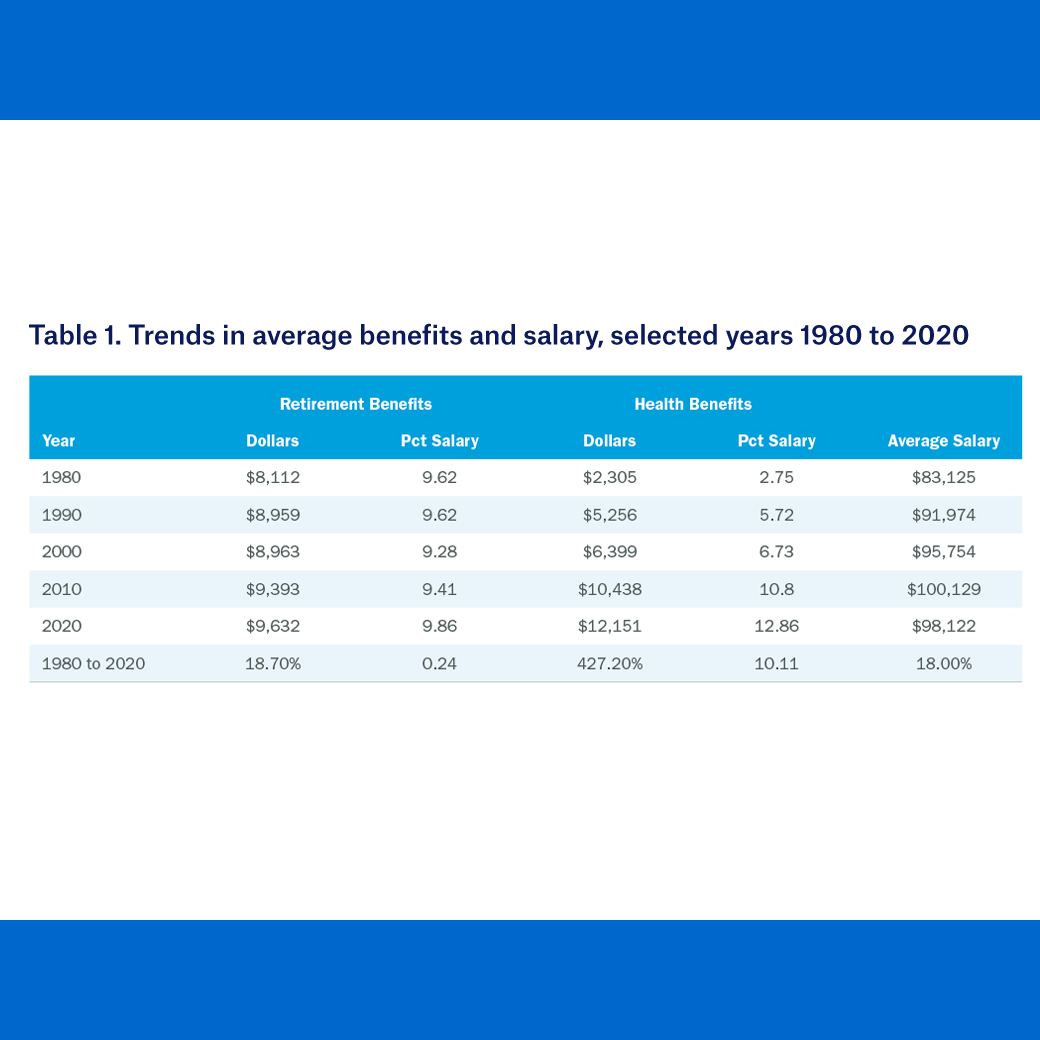How and why do faculty benefits vary across four-year colleges and universities?
Summary
While differences in faculty salaries across academia are widely known, as are specific factors associated with salaries, little is known about the size and variation of faculty benefits. This study explores how those benefits have changed over time and whether benefits in dollar and percentage terms were related to characteristics pertaining to faculty and the institutions where they work.
Key Insights
- Total faculty benefits have risen over time, both in absolute terms and as a proportion of total compensation, driven mainly by rising institutional subsidies for health care costs.
- Dollar benefits are higher at institutions with higher salaries. However, institutions on average do trade off salary and non-salary benefits, particularly health benefits.
- While faculty salaries are higher on average at private institutions than at public institutions, public institutions generally offer higher benefits, particularly retirement benefits, which narrows the total compensation gap.


